Light | Term 3 Unit 1 | 7th Science - Student Activities | 7th Science : Term 3 Unit 1 : Light
Chapter: 7th Science : Term 3 Unit 1 : Light
Student Activities
ACTIVITY 1
Requirement: Three empty match boxes, pin, candle and wooden blocks.
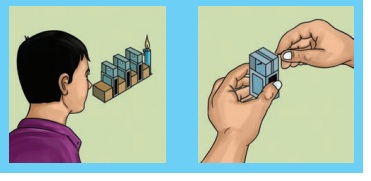
Procedure: Arrange empty match boxes and wooden blocks as shown in the figure. First, you make a hole in the inner tray of each match box such that all three holes are in the same spot. Arrange the match boxes as shown in figure. Now, adjust the three inner trays in such a way that the three holes are in a straight line. Place a lighted candle at one end of this arrangement and try to see the flame of candle from a hole at the other end. Is the flame visible?
Now, arrange the trays such a way that they are not at the same height. Try to see the flame. Is it visible? What does this activity tell you about the path of light?
Light travels in straight line, it cannot bend the path itself. This is called as the rectilinear propagation of light. This is one of the most important property of light.
ACTIVITY 2
Make your pin-hole camera
Requirement : Two rectangular pieces of thick paper, carbon paper, a semi-transparent paper, adhesive
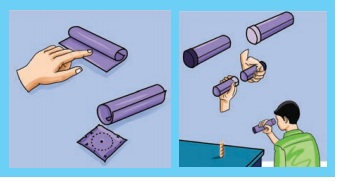
Procedure : Make two tubes using thick paper as shown in figure. One tube should be slightly smaller in diameter so that it can slide into the other tube without leaving much gap between the tubes. Fix a carbon paper to one side of the tube of greater diameter. Make a hole with a pin at the center of the carbon. Close one end of the second tube with the butter paper. Slide the smaller tube into the bigger one such a way that the butter paper is inside. Keep a lighted candle on a table and look through the hole with black side towards the candle. If you go closer to the candle, you will see a smaller, but brighter image. You can also change the image size by adjusting the tubes.
Use the pin-hole camera to see things in sun light outside the window and see how good an image you get. What are your observations about the image? Is it straight, inverted, bright and sharp?
ACTIVITY 3
Make your own periscope : You can use an empty agarbathi box and two plane mirrors to make a periscope.
As shown in the figure below, two plane mirrors are kept 45 degrees to horizontal.

As shown the figure above, the light rays from the distant object enter through the tube at 1, and hit the mirror at 2. As the angle of incident must be equal to angle of reflection, the reflected rays flow through the tube downwards. As the light rays hit the mirror at 3 once again they are reflected. This reflected rays then travel out of the box to our eye. As you can see, periscope uses the laws of reflection.
ACTIVITY 4
Let’s categorize transparent material, translucent material and opaque material among the given materials
(Clear plastic ruler, cellophane paper , some water in a glass jar, tissue paper, drinking glass, beaker, tap water, kerosene, coconut oil, note paper, card board, milk, diluted milk, aluminum foil, thick colored plastic lid, rough glass piece, measuring glass with water, wooden piece)
Place all the materials given above in the dark room. Focus a torch light on one side of each material. Inspect the light coming out at the other side of each material and then classify the materials in the table.
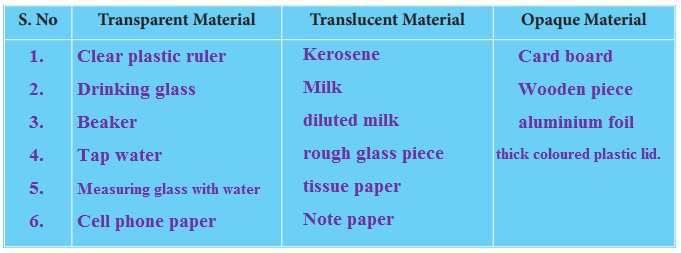
ACTIVITY 5
Requirement : A white screen, a cylindrical opaque object and three bulbs in different sizes.
Use the three different size lamps and examine the umbra and penumbra formed. Keep the distance between the lamp and the cylinder, cylinder and the screen same. As the size of the lamps grow smaller, the umbra region begins to enlarge. If the size of the lamp is a point, then there will be no penumbra. There would be only umbra shadow. Can you tell what the reason is for that?
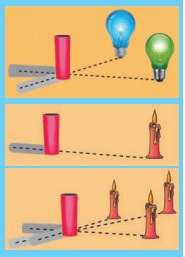
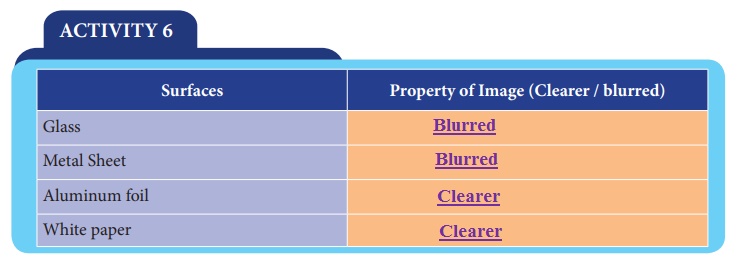
ACTIVITY 7
There are eight letters in the word EINSTEIN
1. Write the word in front of a plane mirror shown in diagram
2. Write down how these letters appear in the mirror
3. How many of these letters appear to be different, when the word is reflected?
4. Write down the letters that appear to be the same.

Answer:
(i) 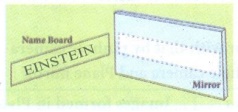
(ii) 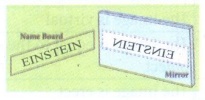
(iii) 3 letters (E, N, S)
(iv) I, T
ACTIVITY 8
We have seen that white light is made of different colors and we can split white light. Is it possible to do the reverse? That is, can you get white color by mixing colors? Try this activity.
You need oil pastel and white paper. Take different oil pastel colors. Choose colors which are exactly seen on the rainbow. Apply colors over each other on a white paper. Did you get white color?
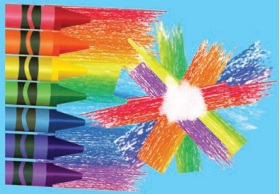
ACTIVITY 9
Let’s make a rainbow
You must surely have seen a rainbow in the sky. Why don’t you try making one at your class room?
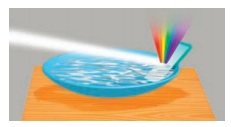
Place a flat but deep pan. Place this pan where there is direct sunlight. Place a plain mirror in the pan as shown in the diagram, so that you see sunlight reflected on you ceiling or on a white wall. Next slowly pour water in to the pan. At particular level of water, you will get a beautiful rainbow colors on the wall. If the colors are not clear adjust the position of the mirror to bring it into focus. This arrangement of colors in sunlight is called spectrum.
ACTIVITY 10
You need Gelatin papers of Red, Blue and Yellow. Fold each gelatin paper three times and look different color objects listed below through each folded paper. Observe what color each object has. Write your observations in the table.
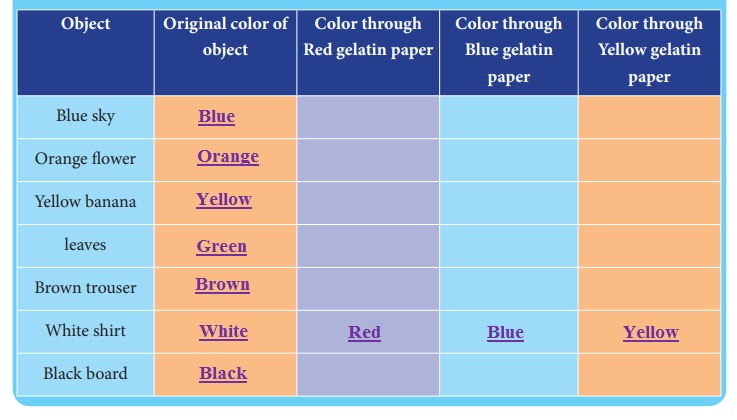
Optical fibre is a device that works on the principle of total internal reflection by which light Transmitter output signal signals (huge data) can be transmitted from one place to another place with a negligible loss of Light ray trapped in the energy in a very short time. It consists of a cable Electrical core of the bre having one or more thin flexible fibers with input signal a glass core through which light signals can be sent. Optical fiber can be twisted and bent easily. When a light a ray of light is incident at one end of the core of optical fiber, it suffers total internal reflection at the many places inside the fiber and emerges at the other end with negligible loss of energy. The data or information in the form of pulses of light, can be sent through bundles of optical fibers. Optical fibers have become very important in high-speed communications, such as cable TV and high-speed broadband services. Fiber optic cables are able to carry more signals than traditional copper cable telephone lines.
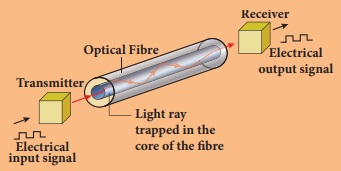

Is the moon a luminous object?
The moon provides light as well, but it cannot produce light by its own. The light emitted by the Moon is the light of the Sun reflected towards the Earth. When we see the Moon, we see only the Moon’s lighted part. Thus, half of the moon is always facing the Sun and receiving light from it. Hence, we receive light from the moon.
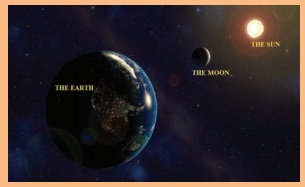
We often use a kind of gas- discharge lamp that uses fluorescence to produce visible light. The electric current in the gas excites mercury vapour, which produces short-wave ultraviolet light that then causes a phosphor coating on the inside of the lamp to glow in visible light.
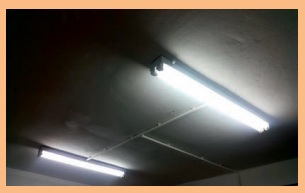
Light is the only source of energy for plants. So, they entirely depend on light. People and animals derive energy from carbohydrates, protein and fat through their food. Plants produce food using the energy from Sun light, carbon-di-oxide and water by the process called as Photosynthesis. Sun light acts a vital role in the process of photosynthesis.

Al-hasan -Haytham was ascientific thinker who made important contribution to the understanding of vision, optics and light. He observed that light coming through a tiny hole travelled in straight lines and projected an image onto the opposite wall. Based on such experimentation, he concluded that vision is accomplished by rays coming from external luminous sources and entering the eye, rather than through rays emitted from the eye as was then commonly believed. He is the first one to experiment with light and found important properties like the rectilinear propagation of light.
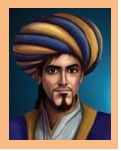
Before the advancement of camera, Pinhole camera was used to photograph movement of the sun over a long period of time. This type of photography is known as solography and also be used for observing and recording solar eclipses. And it was also used to take photograph of stationary objects.
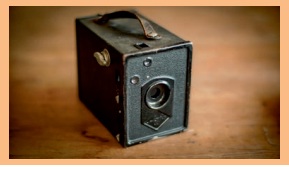
Why is the word “AMBULANCE” written backwards in ambulance vehicle? This is due to lateral inversion .The phenomenon due to which the left side of an object appears to be right side of the object in its image in a reflecting medium (mirror). so that drivers see the word the right way around in their rear-view mirror
Why danger lights in vehicles are red in colour?
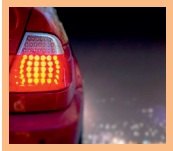
1. Red color is scattered the least by air molecules.
2. Red color has the highest wavelength of all the other colors. So red color is able to travel the longest distance through air, fog.
Related Topics